
ARSENIC
Specimen arn-16
$ 38.00
dims mm=50.09x42.96x39.68
wt g=148.4
Engineer Mine, Atlin, British Columbia, Canada
More than 80% of the weight of this specimen is elemental arsenic, in the form of a fine grained mass with no crystal indications except when viewed using a high power loupe. It has tarnished to a dark brown-gray.

 Amethyst Galleries' Mineral Gallery MINERALS |
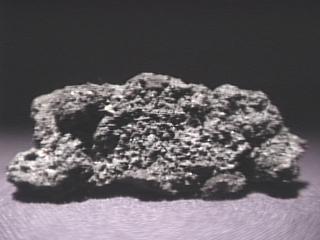
ARSENIC specimen arn-1
$ 105.00
$ 105.00
Dims: 2.1" x 0.9" x 0.4" (5.3 x 2.3 x 1.0 cm)
Wt: 23.2 g
Jachymov (Joachimstahl), northwestern Bohemia, Czech Republic
The bulk of this specimen's mass is made up of Arsenic, an element that is seldom found in its native form. It occurs as hundreds of tiny, malformed, intergrown crystals that are heavily oxidized. A loupe is needed to study them effectively. The crystals seem to take on an almost bladed form at times, but they are undamaged. Under magnification, one can see glimpses of silver-gray color and metallic luster on exposed edges, but the material is otherwise completely oxide-coated, with a gray black color and a dull luster. The specimen appears to be made up almost entirely of the metal, and what little foreign material is present I cannot identify. It is one of the oddest specimens of a native element that I have seen.


arn-1 ($105.00)
Jachymov (Joachimstahl), northwestern Bohemia, Czech Republic
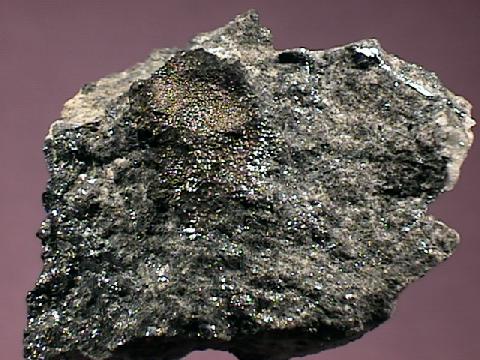
ARSENIC specimen arn-2
$ 26.00
$ 26.00
Dims: 2.0" x 1.5" x 1.4" (5.1 x 3.8 x 3.6 cm)
Wt: 3.64 oz. (103.1 g)
Kuse Mine, near Bau, Sarawak, Borneo
I do believe that this is the first specimen of any mineral that we have ever had from Borneo! The Arsenic is in the form of a brownish-colored patch with a dull, metallic luster that rests on the gray host rock. Close examination will reveal that this small, brownish patch is actually a thin section of a crust that has botryoidal form. Further examination will reveal that the gray host rock is partly permeated with small, round nodules of the element that show a dull-gray to black coloration and a dull metallic to a dull matte luster. Also present in the host rock are many needle-like stibnite crystals. These are easy to spot, as they have a moderate gray coloration and a metallic luster that is much brighter than any of the other constituents of this specimen.
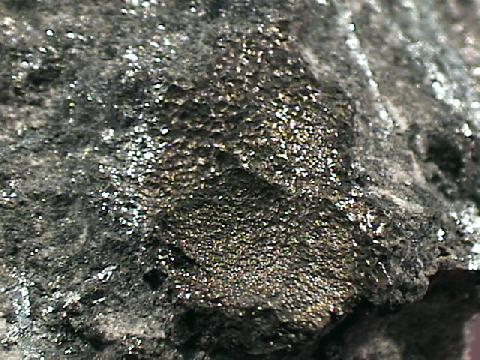

arn-2 ($ 26.00)
Kuse Mine, near Bau, Sarawak, Borneo

ARSENIC specimen arn-3
$ 55.00
$ 55.00
Dims: 1.8" x 1.7" x 1.4" (4.6 x 4.3 x 3.6 cm)
Wt: 3.88 oz. (109.9 g)
Kuse Mine, near Bau, Sarawak, Borneo
There is a substantial amount of native Arsenic on this small hand specimen; it occurs as a rather thick crust that coats part of the base rock. This crust shows a dark brown color, a dull metallic luster, and a definite botryoidal form when viewed from above, though a side view shows that the crust has a dull, matte luster and a compact, radiating habit. One of its cross-section surfaces has been slightly scraped so that smatterings of a bright, silvery-gray color and bright metallic luster are visible through the dark oxide coating. The host rock underneath appears to be made of micro- to macrocrystalline quartz that is permeated with small nodules of Arsenic and bright, metallic needles of stibnite. It is one of only a few specimens that we have from Borneo.
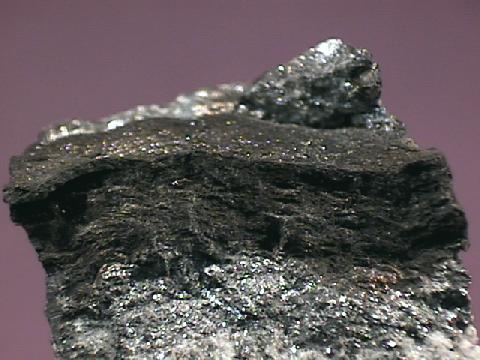

arn-3 ($ 55.00)
Kuse Mine, near Bau, Sarawak, Borneo
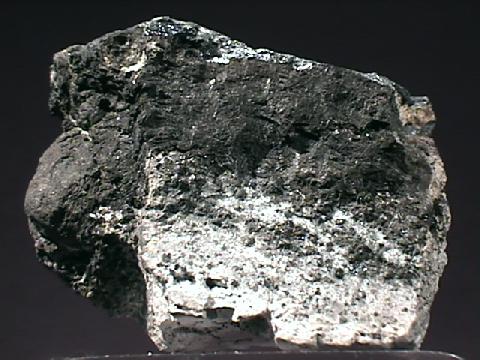
ARSENIC specimen arn-4
$ 55.00
$ 55.00
Dims: 2.1" x 1.5" x 1.3" (5.3 x 3.8 x 3.3 cm)
Wt: 5.71 oz. (162.2 g)
Kuse Mine, near Bau, Sarawak, Borneo
This small hand specimen consists of a rather thick layer of botryoidal native Arsenic. The Arsenic is a dark, brown-black coloration and generally shows a dull matte luster, though a few areas show almost a dull metallic one. Close examination of the sides of this crust show that it has an almost compact, fibrous appearance in some areas. This crust covers a pale gray host rock and is in turn covered by a layer of flattened, damaged and heavily intergrown stibnite crystals. On one side of the specimen where the Arsenic and the base rock meet, one can see parts of some very small stibnite sprays that extend into the native metal.
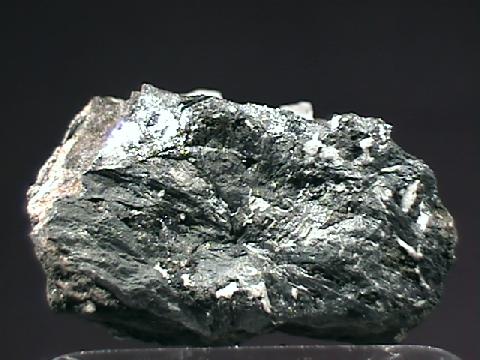

arn-4 ($ 55.00)
Kuse Mine, near Bau, Sarawak, Borneo

ARSENIC specimen arn-5
$ 25.00
$ 25.00
Dims: 1.3" x 1.0" x 0.5" (3.3 x 2.5 x 1.3 cm)
Wt: 1.00 oz. (28.5 g)
Kuse Mine, near Bau, Sarawak, Borneo
This thumbnail specimen consists of part of a layer of botryoidal native Arsenic. This crust is made up of several different layers of Arsenic that are stacked on top of each other. The topmost layer is heavily weathered and shows very little form; it has a dark brown color and a dull matte luster. Beneath this layer is another layer which is also dark brown in color, but is not weathered. Its cross-section shows a curved, undulating layer; a small portion of its upper surface is exposed, showing a gently rolling botryoidal shape and a paler brown color and dull metallic luster. This layer in turn covers another botryoidal layer, all of which that is visible is damaged. This bottom layer shows a moderately dark gray color and a moderate metallic luster, and shows a slight bo

arn-5 ($ 25.00)
Kuse Mine, near Bau, Sarawak, Borneo

ARSENIC specimen arn-6
$ 28.00
$ 28.00
Dims: 1.5 x 1.2 x 1.0" (3.8 x 3.0 x 2.5 cm)
Wt: 1.48 oz. (42.2 g)
the mine at Sainte Marie, France
This small specimen consists almost entirely of native Arsenic by weight. It is almost purely massive, though there are a few areas that show some tiny reniform formations that show a dull metallic luster- the massive material has a duller luster that is almost matte. All of the Arsenic has a dark gray-black coloration. There is a very thin, uneven crust of a pale brown, chalky host rock coating one area.

arn-6 ($ 28.00)
the mine at Sainte Marie, France
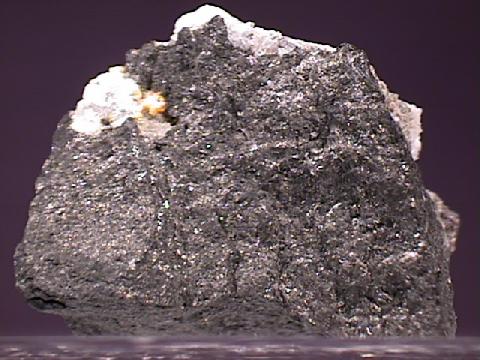
ARSENIC specimen arn-7
$ 28.00
$ 28.00
Dims: 1.3 x 1.0 x 0.9" (3.3 2.5 x 2.3 cm)
Wt: 1.29 oz. (36.6 g)
the mine at Sainte Marie, France
This small thumbnail specimen consists of a small, mostly massive chunk of native Arsenic. The Arsenic shows only a small amount of a reniform form on two faces. These faces show a rather dark gray coloration and a submetallic luster, whereas the rest of the surface area has a darker, almost gray-black color and a dull luster. There is a small white quartz crust coating part of the Arsenic, off of which are growing many small crystals that actually extend downwards into the metal! Otherwise, there is no host rock.

arn-7 ($ 28.00)
the mine at Sainte Marie, France
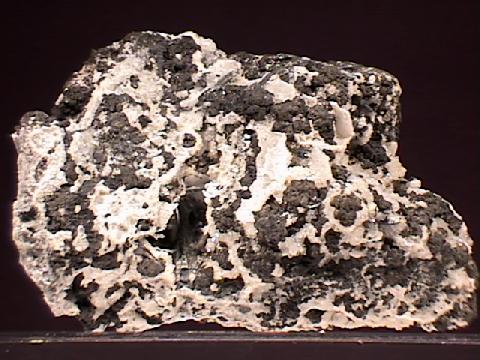
$ 150.00
Dims: 3.4 x 2.3 x 1.3" (8,6 x 5.8 x 3.3 cm)
Wt: 10.8 oz. (306 g)
Kuse Mine, near Bau, Sarawak, Borneo
Scores of intergrown Arsenic crystals make up most of the mass of this hand specimen. They are generally in good condition, as some of the more exposed crystals are visibly damaged. They do not exceed 0.2" (5 mm) in any dimension and have a somewhat rounded but discernable pseudocubic crystal form, though their intergrowth with each other makes said form rather difficult to study. All have a dark, brown-black coloration and a dull, matte luster, as their surfaces are oxidized and somewhat rough. Among the Arsenic crystals are several thick Stibnite needles that reach up to 0.6" (1.5 cm) in length. They have the standard dark silvery-gray coloration and bright metallic luster of their species. Most are broken, but a few are protected by the fact that they rest in hollows that extend into the piece. Thin, white crusts and druses of tiny quartz crystals pervade the entire specimen, filling many of the tiny crevices between the Arsenic clusters. These crystals do not exceed 0.1" (3 mm) in length and are generally in very good condition and show excellent form.
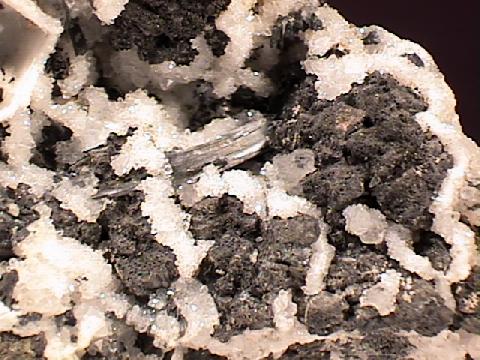

Kuse Mine, near Bau, Sarawak, Borneo
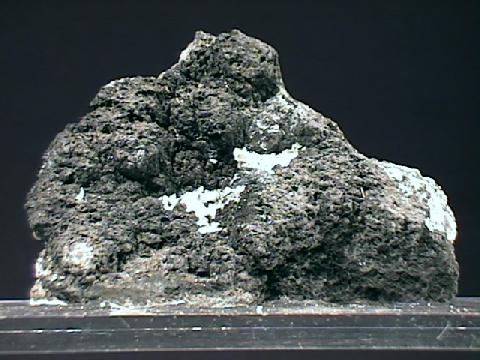
ARSENIC specimen arn-9
$ 55.00
$ 55.00
Dims: 3.1 x 2.4 x 2.1" (7.9 x 6.1 x 5.3 cm)
Wt: 13.1 oz. (372 g)
Kuse Mine, near Bau, Sarawak, Borneo
This hand specimen consists of a thick layer of weathered, semicrystalline Arsenic that partly coats a base made up of quartz and more Arsenic. The crust shows little in the way of actual crystal form, but has the odd face or edge that appear to be intact. All of the Arsenic has a dull, brown-black color and most shows a matte luster, but a few small patches show a dull metallic shine. Atop this Arsenic crust lies a very small crust of weathered white calcite and a damaged spray of small stibnite needles. More of these needles accompany the Arsenic that is trapped in the white, crystalline quartz base. This Arsenic is far less intergrown and shows better crystal form.
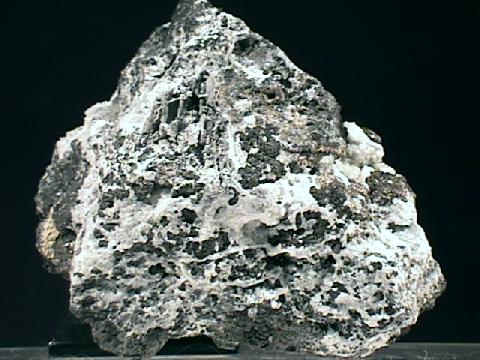

arn-9 ($ 55.00)
Kuse Mine, near Bau, Sarawak, Borneo

ARSENIC specimen arn-10
$ 55.00
$ 55.00
Dims: 3.2 x 2.2 x 1.3" (8.1 x 5.6 x 3.3 cm)
Wt: 12.4 oz. (352 g)
Kuse Mine, near Bau, Sarawak, Borneo
This specimen is mostly native Arsenic by weight. The Arsenic occurs as two slightly botryoidal layers that coat both sides of the gray calcareous host rock. The Arsenic shows no crystal form but has definite botryoidal tendencies and visible layering- its color is a dull black-brown, and its luster is very dull. A tiny bit of realgar is visible lining tiny pockets in the thicker layer, and both layers serve as a matrix for many small stibnite crystals. A few bits of a thin, white calcite crust partly coat the thinner layer.

arn-10 ($ 55.00)
Kuse Mine, near Bau, Sarawak, Borneo
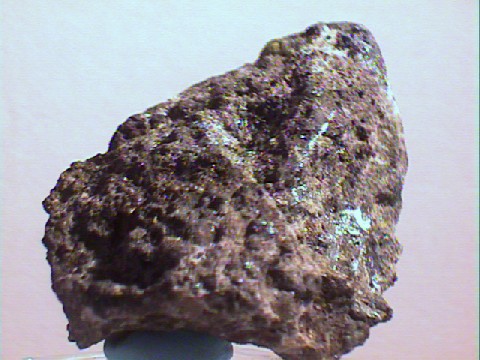
ARSENIC specimen arn-11
$ 30.00
$ 30.00
Dims: 2.2 x 1.6 x 1.3" (5.6 x 4.0 x 3.4 cm)
Wt: 5.2 oz. (146 g)
Kuse Mine, near Bau, Sarawak, Borneo
Most of the mass of this large hand specimen consists of Native Arsenic. The Arsenic does not have a definable crystal form- in fact, most of it is massive- but some does show a botryoidal habit. It has a dull brown to black color, depending on its level of oxidation, and the brown material shows a dull, nearly submetallic luster. It is accompanied by several stibnite crystals.

arn-11 ($ 30.00)
Kuse Mine, near Bau, Sarawak, Borneo

ARSENIC specimen arn-12
$ 30.00
$ 30.00
Dims: 2.0 x 1.6 x 1.4" (5.0 x 4.1 x 3.6 cm)
Wt: 5.4 oz. (155 g)
Kuse Mine, near Bau, Sarawak, Borneo
This large hand specimen consists mostly of massive Native Arsenic. The Arsenic generally has a black or dark brown color; the black material has a dull luster due to heavy oxidation, whereas the less-oxidized brown material may show a nearly submetallic luster. Layers are definitely visible in the piece, consisting of crystalline stibnite, massive Arsenic, and stibnite, realgar and semicrystalline Arsenic in what appears to be a white calcite matrix.

arn-12 ($ 30.00)
Kuse Mine, near Bau, Sarawak, Borneo
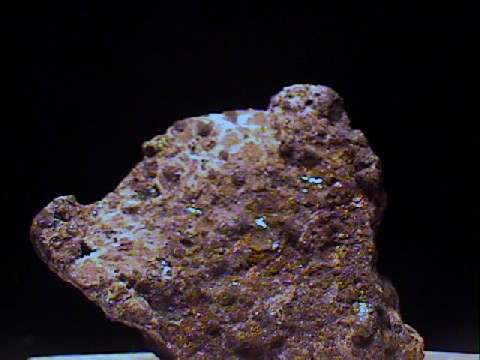
ARSENIC specimen arn-13
$ 25.00
$ 25.00
Dims: 2.0 x 1.7 x 1.5" (5.2 x 4.3 x 3.9 cm)
Wt: 4.4 oz. (125 g)
Kuse Mine, near Bau, Sarawak, Borneo
Though a portion of this specimen is made up of massive and botryoidal Native Arsenic, most of it appears to consist of semicrystalline Arsenic in a possible calcite matrix. These Arsenic "crystals" look mostly like small spheres, but close study may reveal some definable, though rounded, pseudocubic form.

arn-13 ($ 25.00)
Kuse Mine, near Bau, Sarawak, Borneo
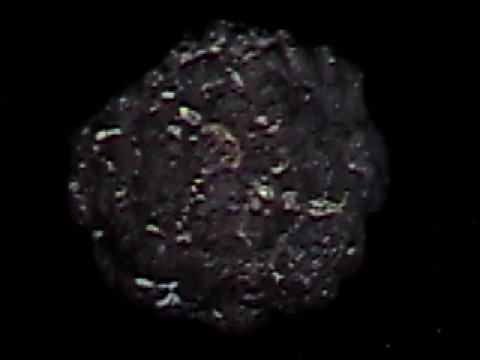
ARSENIC specimen arn-14
$ 72.00
$ 72.00
Dims: 0.58x0.54x0.44" (1.47x1.36x1.12cm)
Wt: 27.6ct (5.52g)
Akadanunura, Eschizen Province, Japan
This thumbnail specimen is a granular nodule of arsenic crystals. Except for a spot or two of damage, it has tarnished to a dark brown, nearly black color. It is nearly spherical with a rather bumpy texture, but I can not see any evidence of a botryoidal growth. Examination with a loupe reveals that some of the shiny metallic reflections are the arsenic where it was damaged but not yet tarnished, while other spots appear to be tiny crystals of another mineral, possibly arsenopyrite. Considering that there are no obvious, well-formed crystals of arsenic, this is still a rather nice specimen.
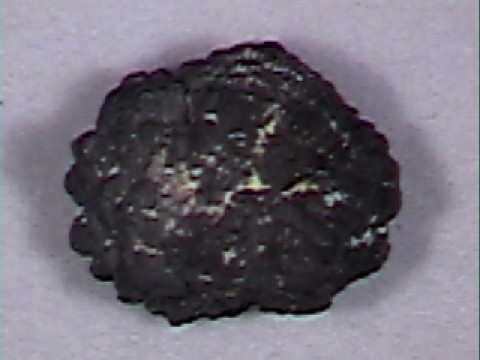

arn-14 ($ 72.00)
Akadanunura, Eschizen Province, Japan
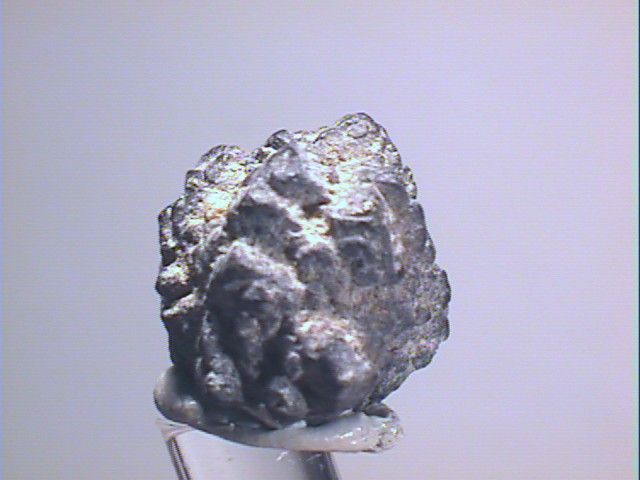
ARSENIC specimen arn-15
$ 72.00
$ 72.00
Dims: 0.48x0.45x0.45" (1.22x1.15x1.15cm)
Wt: 0.16oz (4.5g)
Akadanimura, Echizen Provence, Japan
This is a small nodule of native arsenic. It appears to be a cluster of intergrown rhobohedral crystals which have weathered to a dull black appearance, with rounded corners. It is accompanied by several tiny crystals of some colorless clear mineral which has weathered such that I cannot identify it, and also with a light dusting of a cream-yellow mineral, undoubtedly some kind of arsenate. The arsenic is clearly crystalline in form, and the specimen is undamaged.
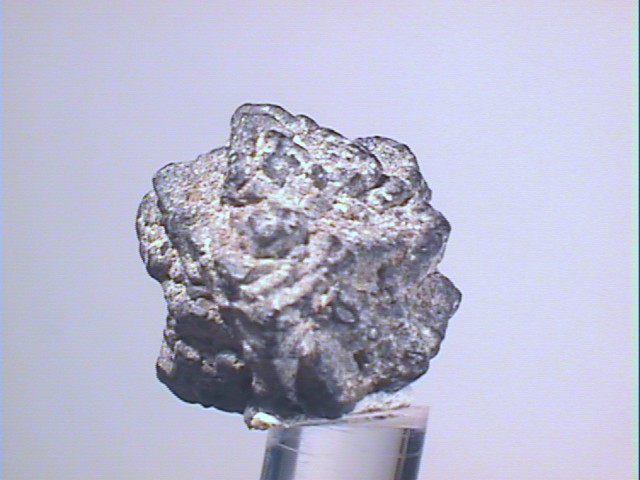

arn-15 ($ 72.00)
Akadanimura, Echizen Provence, Japan

ARSENIC specimen arn-16
$ 38.00
$ 38.00
dims mm=50.09x42.96x39.68
wt g=148.4
Engineer Mine, Atlin, British Columbia, Canada
More than 80% of the weight of this specimen is elemental arsenic, in the form of a fine grained mass with no crystal indications except when viewed using a high power loupe. It has tarnished to a dark brown-gray.


arn-16 ($ 38.00)
Engineer Mine, Atlin, British Columbia, Canada

ARSENIC specimen arn-17
$ 60.00
$ 60.00
dims mm=60.68x56.88x17.47
wt g=148.8
Engineer Mine, Atlin, British Columbia, Canada
While the Engineer Mine is noted for its production of gold, it also produces arsenic in specimens such as this. The arsenic is a fine granular mass which has tarnished to a dark brown-gray.


arn-17 ($ 60.00)
Engineer Mine, Atlin, British Columbia, Canada